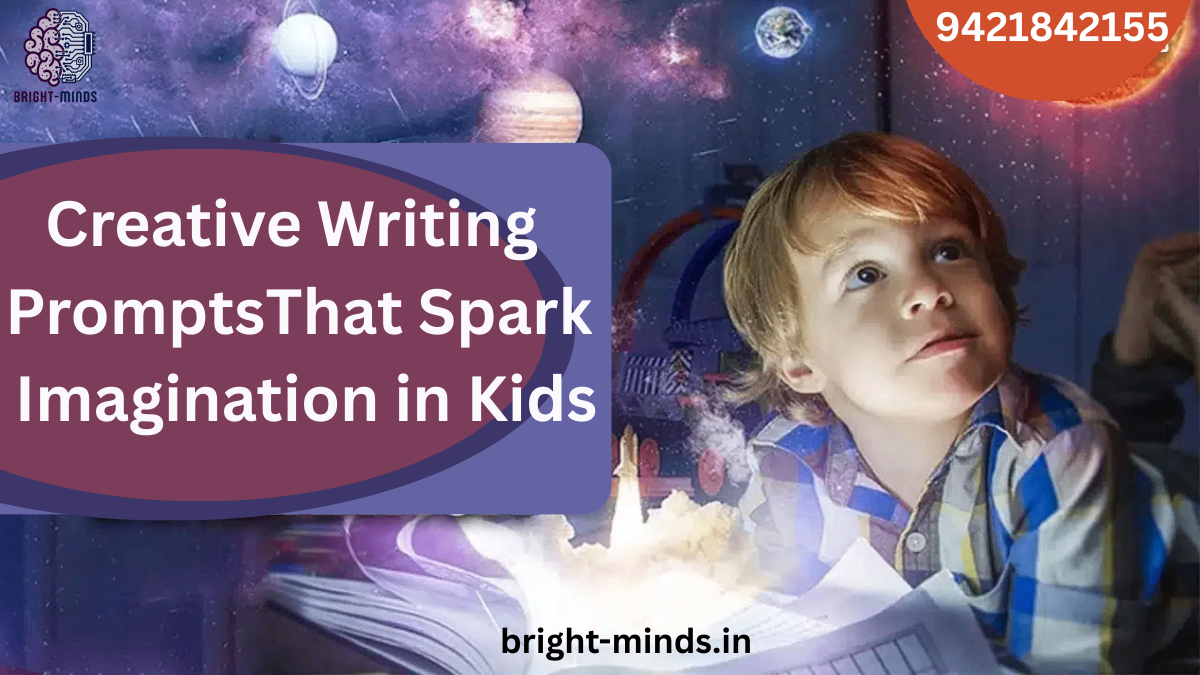Unlocking a child’s creativity is one of the most powerful gifts we can offer. Whether you’re a parent, teacher, after-school program leader, or part of an educational company aiming to empower young minds, creative writing is a powerful tool to develop imagination, literacy, and emotional intelligence.
But here’s the challenge: getting kids excited to write isn’t always easy. That’s where creative writing prompts come in.
In this blog, we’ll explore how the right prompts can spark imagination, why creativity matters in today’s educational landscape, and how your organization or home can nurture the next generation of storytellers.
✨ Why Creative Writing Matters More Than Ever
In a world dominated by AI, automation, and standardized testing, creativity is emerging as a critical differentiator in both education and the future job market. According to the World Economic Forum, creativity ranks in the top five skills needed in the workforce by 2025. For kids, this means that developing creative thinking through storytelling isn’t just fun—it’s foundational.
Creative writing also helps with:
- Emotional expression: Kids can explore their thoughts in a safe, imaginative space.
- Language development: Writing improves vocabulary, grammar, and communication.
- Problem-solving: Creating characters and stories builds critical thinking.
🚀 The Power of Writing Prompts
So how do you start a child on their writing journey?
Enter the creative writing prompt—a short, imaginative scenario or question designed to spark curiosity and guide the writing process. A well-crafted prompt eliminates the fear of the blank page and gives kids the confidence to take the first step.
🔑 Key Elements of Effective Prompts:
- Open-ended: Prompts should allow multiple directions and interpretations.
- Age-appropriate: Vocabulary and themes should suit the child’s development level.
- Imaginative: Include fantasy, mystery, or humor to ignite creativity.
- Relatable: Tie into real-life experiences like school, pets, family, or friendship.
✏️ 10 Creative Writing Prompts to Spark a Young Writer’s Imagination
Here are 10 engaging prompts that can inspire kids ages 6–12:
- You find a door in your backyard that wasn’t there yesterday. What happens when you open it?
- Your pet starts talking one morning. What’s the first thing they say?
- If your school turned into a spaceship, where would you travel?
- You wake up with superpowers. What do you do first?
- Write a story where a cupcake saves the day.
- Describe a world where kids make all the rules.
- You get a mysterious letter in the mail—with no return address.
- Your toys come to life when no one’s watching. What do they do?
- Invent a new holiday. What’s it called and how do people celebrate?
- A dragon shows up on your front porch asking for your help. What do you do?
These prompts work well in classrooms, writing workshops, or at home and can be adapted into group activities or solo journaling exercises.
💡 Real-World Applications: Beyond the Page
Creative writing isn’t just a school subject—it has real-world value. Organizations are integrating storytelling into programs that develop emotional resilience, teamwork, and leadership.
Industry Insights:
- Educational companies are integrating AI-based story builders and gamified writing apps to make writing more engaging.
- EdTech startups are increasingly focused on creative skills as part of holistic learning platforms.
- Libraries and community centers are hosting story nights and writing competitions to build community and literacy.
If you’re part of an educational company or a content team, consider how your products and services can incorporate storytelling elements—especially for kids.
🛠️ Tips to Encourage Creative Writing in Kids
Whether you’re a parent, teacher, or business leader, here’s how to help kids write more—and love it:
- Make it visual: Use illustrations or storyboards to complement prompts.
- Set a timer: A short 10-minute writing challenge adds structure and fun.
- Celebrate creativity: Focus on ideas over spelling or grammar—especially early on.
- Create a routine: A “Storytime Friday” or “Magic Monday” can build consistency.
- Use technology wisely: Try creative writing apps or digital journals with interactive features.
🔍 Market Trends: The Rising Demand for Creative Learning Tools
The global creative writing tools market is seeing steady growth, especially within EdTech. According to HolonIQ, tools that combine creativity and curriculum alignment are among the most in-demand.
Key trends:
- Gamification: Making writing feel like play.
- Personalization: Adapting prompts based on age, reading level, or interests.
- Interactive platforms: Combining drawing, audio, and writing for multi-sensory engagement.
Now is the time for both educators and companies to invest in writing programs that fuel imagination and future-ready skills.
you may be interested in this blog here:-
Unlocking the Magic of Phonics: The Power of Phonics Songs for Kids

